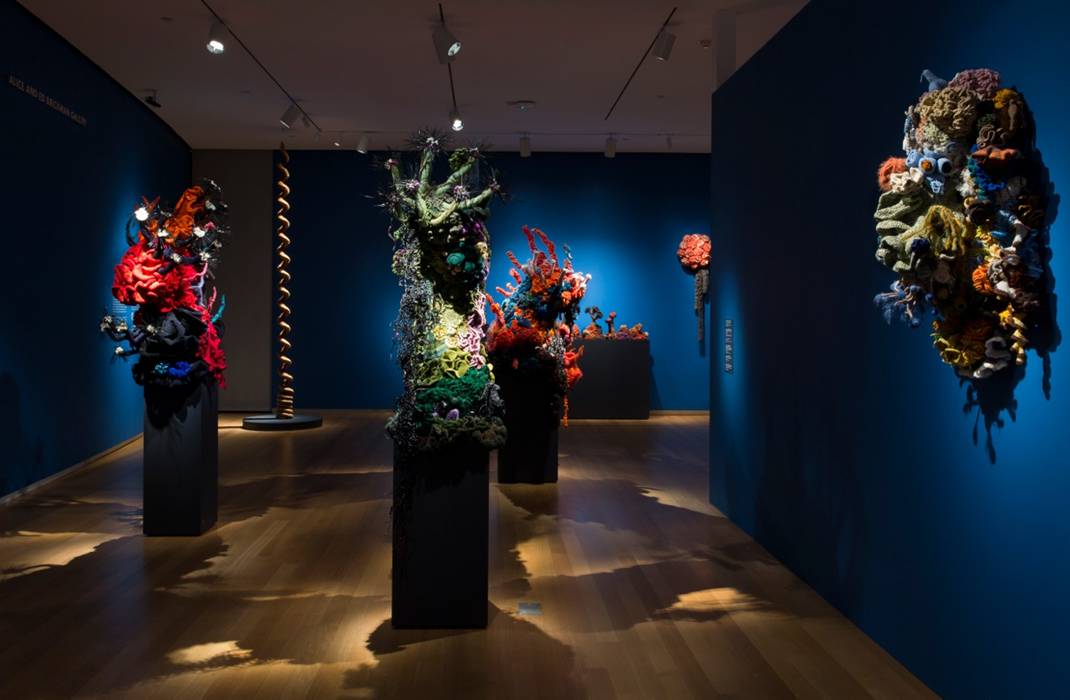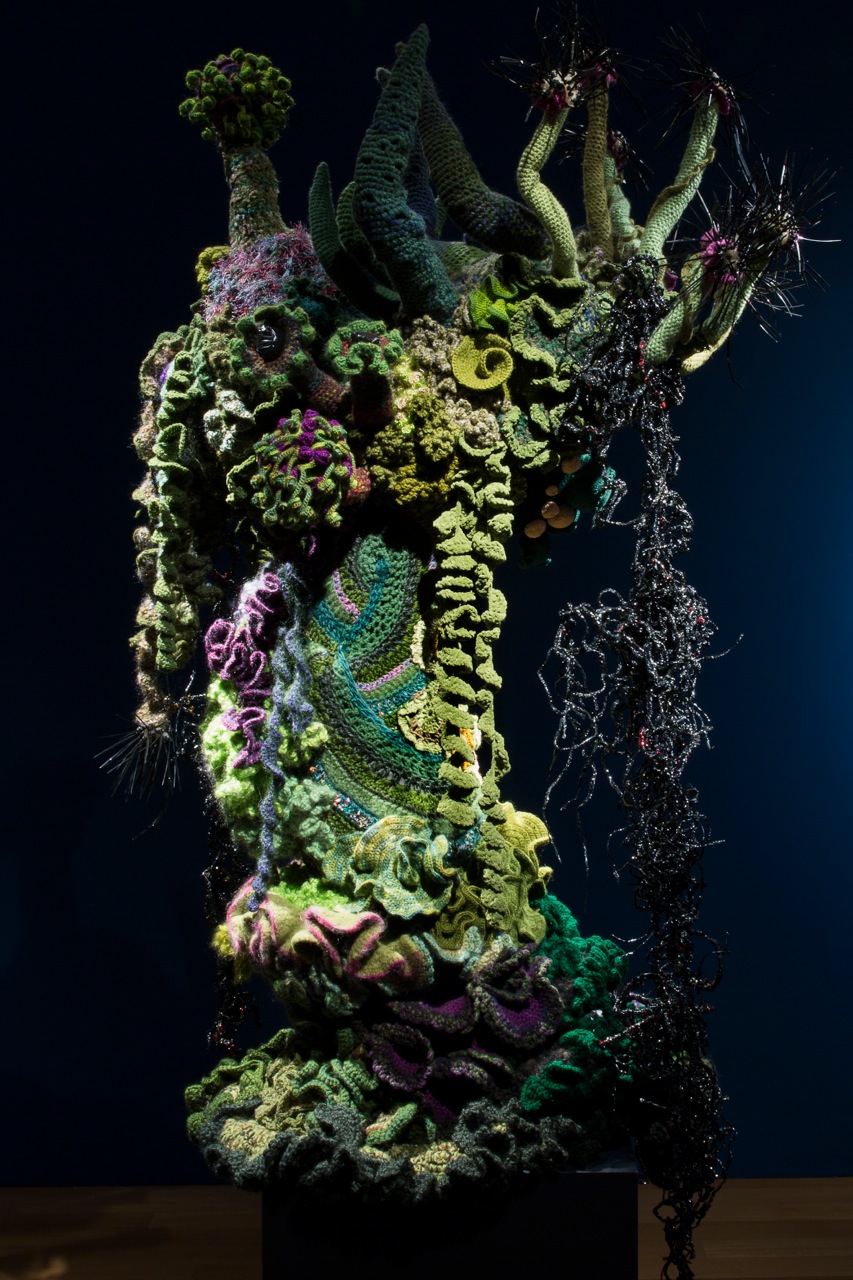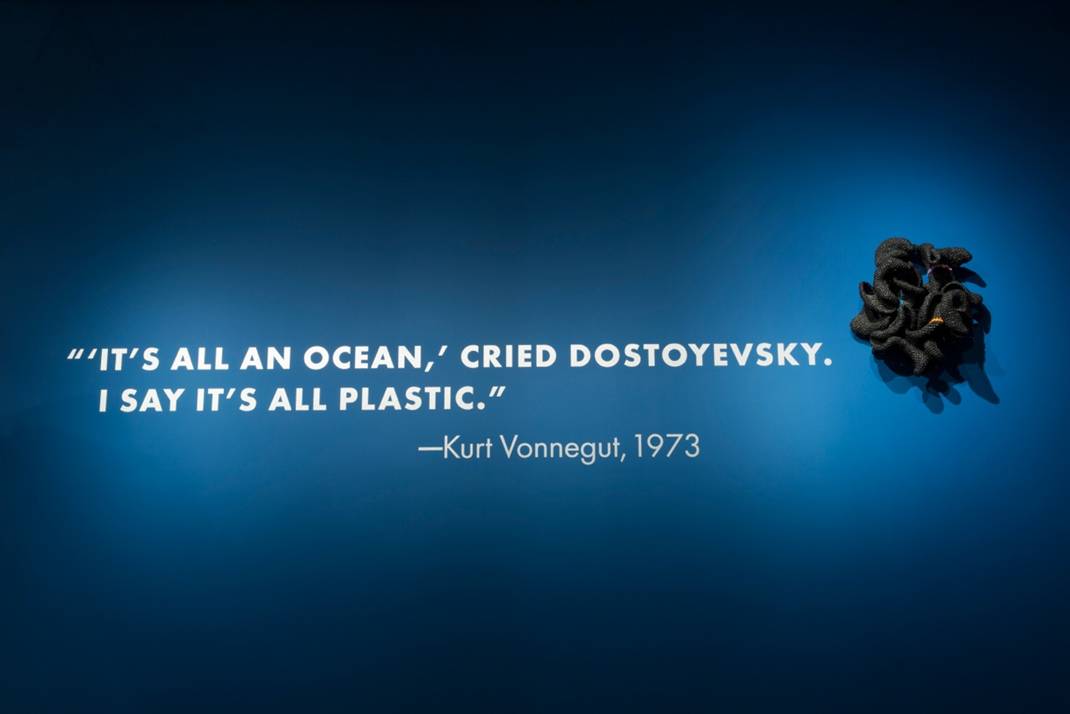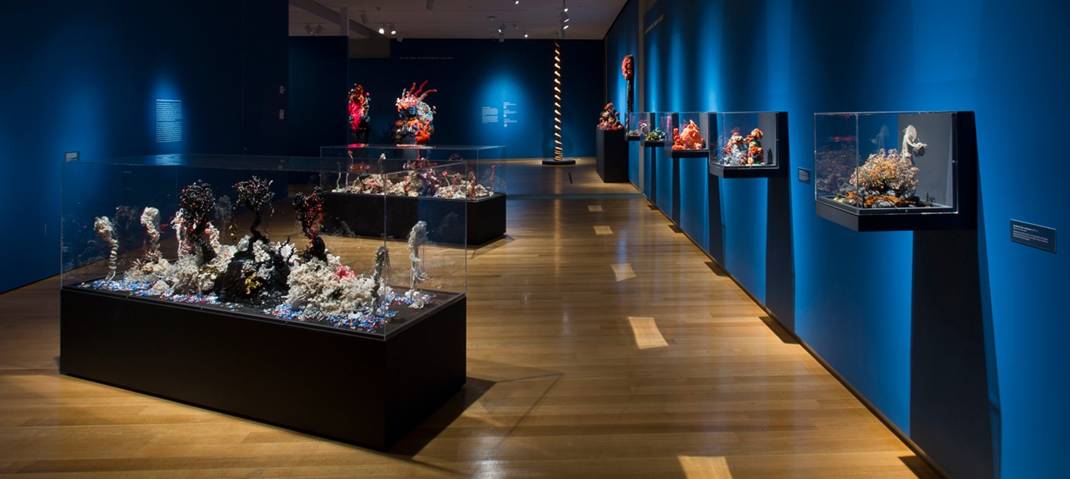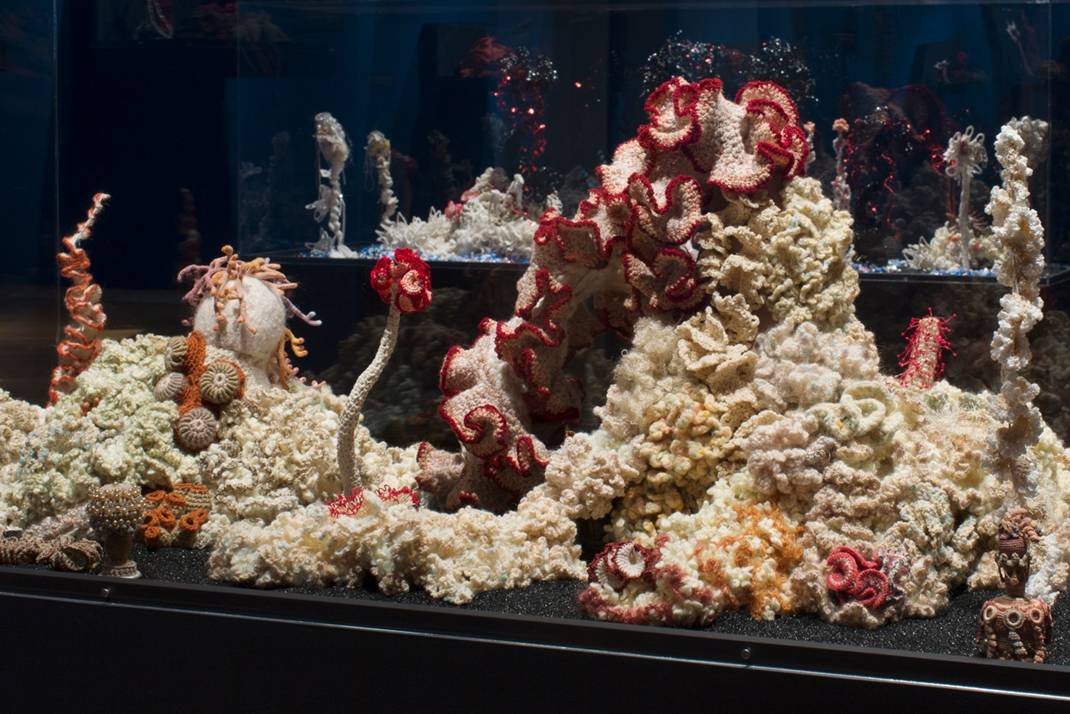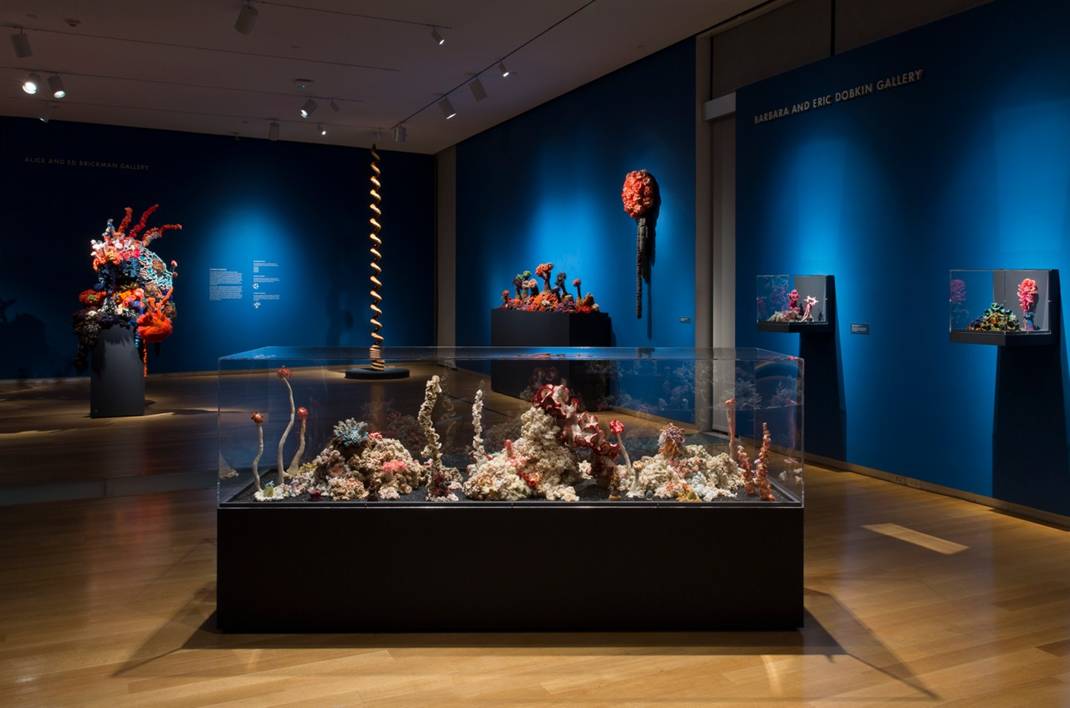About the Exhibition
Crochet Coral Reef: TOXIC SEAS celebrates the tenth anniversary of the Crochet Coral Reef, an ongoing project by sisters Margaret and Christine Wertheim and the Institute For Figuring. Mixing crocheted yarn with plastic trash, the work fuses mathematics, marine biology, feminist art practices, and craft to produce large-scale coralline landscapes both beautiful and blighted. At once figurative, collaborative, worldly, and dispersed, the Crochet Coral Reef offers a tender response to dual calamities facing marine life: climate change and plastic trash.
With 2016 the hottest year on record, living reefs everywhere are under stress. Into these arenas of color huge areas of whiteness now intrude; bleaching events signal that corals are sick and dying. In 2005, in response to devastation of the Great Barrier Reef in their native Australia, the Wertheims began to crochet a simulation of healthy and ailing reefs. Using the algorithmic codes of crochet, the sisters produce crenellated forms that are representations of hyperbolic geometry, which is also manifest in the undulating structures of corals, kelps, and other reef organisms. The Wertheims and their collaborators – a core group of worldwide “crochet reefers” – fabricate an ever-evolving artificial ecology.
This exhibition consists of three main “habitats”: A giant Coral Forest and a collection of miniature Pod Worlds represent the diversity of living corals through the varying textures, colors, and forms of crocheted yarn and beads. A Bleached Reef and a brand new Toxic Reef serve as invocations of dying corals; while The Midden—four years’ worth of the Wertheims’ own domestic plastic trash—constitutes a deeply personal response to the problem of plastic waste in the oceans, including human-induced gyres of trash such as the Great Pacific Garbage Patch. Mixing environmental science with science fiction, the Crochet Coral Reef nudges us into what Donna Haraway has called “a time of response-ability,” and a sisterhood with the sea.
Crochet Coral Reef: TOXIC SEAS is curated for the Museum of Arts and Design by Assistant Curator Samantha De Tillio.
This exhibition is part of MAD Transformations, a series of six shows at the Museum of Arts and Design during Fall 2016 that address “artists who have transformed and continue to transform our perceptions of traditional craft mediums.”

